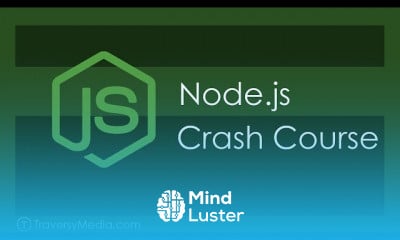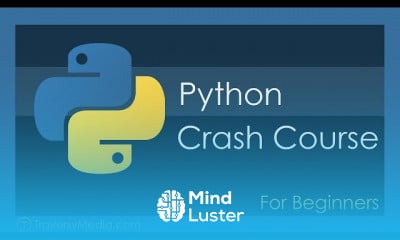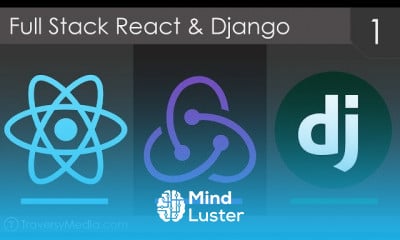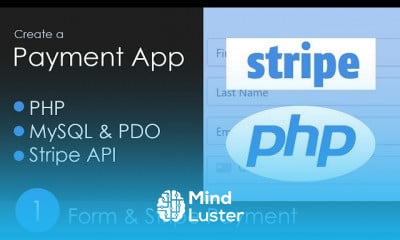Unit Testing in Vue js with Gwen Faraday
Share your inquiries now with community members
Click Here
Sign up Now
Lessons List | 8
Lesson
Comments
Related Courses in Programming
Course Description
What is Vue.js?
Vue (pronounced /vjuː/, like view) is a progressive framework for building user interfaces. Unlike other monolithic frameworks, Vue is designed from the ground up to be incrementally adoptable. The core library is focused on the view layer only, and is easy to pick up and integrate with other libraries or existing projects. On the other hand, Vue is also perfectly capable of powering sophisticated Single-Page Applications when used in combination with modern tooling and supporting libraries.
If you’d like to learn more about Vue before diving in, we created a video walking through the core principles and a sample project.
If you are an experienced frontend developer and want to know how Vue compares to other libraries/frameworks, check out the Comparison with Other Frameworks.
What is VUE coding?
Vue.js Coding
Vue. js is a popular JavaScript library for building web application user interfaces and Visual Studio Code has built-in support for the Vue. js building blocks of HTML, CSS, and JavaScript.
What Is Vue.js?
According to Evan You, the creator of Vue.js:
“Vue.js is a more flexible, less opinionated solution. It’s only an interface layer so you can use it as a light feature in pages instead of a full-blown SPA.”
He wanted to create a frontend framework that’s as powerful as Angular, but also “lighter” and more flexible without all the unnecessary plugins and concepts that come with Angular.
The result was Vue.js, which is one of the most popular frontend frameworks in use today.
Login
Schedule a Demo
Kinsta Blog
10 Things You Need to Know About Vue.js Frontend Framework
Solomon Eseme, July 23, 2021
Vue.js, featured image, illustration.
Shares
With the continuous rise of frontend JavaScript frameworks, including the new Vue.js 3, it’s become vital to keep up with them and understand all about their new features.
Try a free demo
In this article, we’ll explore Vue.js 3 and its newly added features. These latest additions make Vue.js even more robust, making it a great framework to consider for your next project. You’ll learn in detail 10 things you should know about Vue.js and how it’ll help you deliver scalable and high-performing frontend applications.
Ready? Let’s go!
Table of Contents
What Is Vue.js?
Why Developers Use Vue.js
Pros and Cons of Vue.js
10 Things You Should Know About Vue.js
What Is Vue.js?
According to Evan You, the creator of Vue.js:
“Vue.js is a more flexible, less opinionated solution. It’s only an interface layer so you can use it as a light feature in pages instead of a full-blown SPA.”
He wanted to create a frontend framework that’s as powerful as Angular, but also “lighter” and more flexible without all the unnecessary plugins and concepts that come with Angular.
The result was Vue.js, which is one of the most popular frontend frameworks in use today.
State of JS 2020: Front-end Frameworks chart showing Vue.js in the second.
Vue.js is the second most popular frontend framework. (Source: State of JS 2020)
Good news: the new features added to Vue.js 3 make it an even better choice for your next project Check them out in this guide Click to Tweet
Why Developers Use Vue.js
Different reasons propel a developer to use a particular technology. Let’s discuss why we think you should learn Vue.js.
To get started, Vue.js is one of the most straightforward frameworks out there for most developers to jump into, as this framework uses JavaScript. Therefore, anyone who has basic JavaScript knowledge will be able to develop with Vue.js.
The Vue CLI tool combined with other frontend development tools makes setting up Vue.js a breeze. It’s set up with some functionality by default, but you can also build code with a DRY (Don’t Repeat Yourself) logic and structure.
Reactivity is also built into Vue.js. That means the real-time functionality which was popular on the Angular framework is a breeze with Vue.js. For instance, you can easily apply a simple directive such as v-if in your Vue.js application.
Next, let’s discuss the primary pros and cons of Vue.js.
Pros and Cons of Vue.js
Vue.js is the second most popular framework in use today. Let’s see what makes it stick with web developers, and what pushes them away.
Vue.js Pros
We’ll start by exploring the positive aspects of Vue.js.
Tiny Size
Vue.js has a very tiny downloadable size of about 18 KB which is excellent compare to other frameworks with large sizes. However, with that size, Vue.js will positively impact the SEO and UX of your frontend application.
Single-file Component and Readability
Vue.js uses a component-based architecture, thereby separating large chunks of code into smaller components. In addition, in Vue.js, everything is a component, and each component is written with HTML, CSS, and JavaScript, thereby encouraging readability and simplicity.
Solid Tooling System
Vue.js supports lots of frontend development tools right out of the box with little to no configuration from you. For example, Vue.js supports tools such as Babel and Webpack. In addition, it provides unit testing, end-to-end testing libraries, flexible and easy-to-use routing systems, state managers, server-side rendering (SSR), and more.
Easy to Use
If you’ve used Vue.js before, you’ll agree that it’s very easy to use. It modernizes the usual web development approach, making it easy for any beginner to jump right in and feel comfortable with just a few practices.
Vue.js Cons
Now that we’ve covered the pros, let’s explore the negatives of Vue.js.
Reactivity Complexity
The implementation of two-way binding in Vue.js is a handy tool to manage Vue.js components. Two-way binding refers to sharing data between a component class and its template, it’s developed so that if data changes in one location, it automatically updates the others.
However, there is one issue concerning how the reactivity works while the reactivity system rerenders only those chunks of data triggered. Sometimes, there are some mistakes during data reading, so it requires data to be flattened. You can read through this known issue and how it’s addressed on Vue.js’s site.
Language Barrier
Trends
Graphic design tools for beginners
Financial Accounting
Figma for UX UI design
Accounting Finance course
Logo Design
Graphic Design | Photoshop
Advanced Logo design methods
UX design career in 2025
Web design basics
Accounting
Customizing type for logos
Best zoology books
Essential skills for web designers
Graphic Design Basics
Web Design Using HTML CSS
Web Design 101 Free Full Course
Freelance graphic design business
SQL for accountants and finance managers
Mastering logo design in illustrator
Figma Signing Up and Signing In
Recent
Bioinformatics basics
Bioinformatics databases
Vitamin A to Z tablets
Best zoology books
Best cream for piles pain
Laser surgery for piles
Best cream for piles
Anal fissure treatment
Best antibiotics for diseases
Antibodies structure
Macrophage structure
Drosophila genetics
Diagnostic tests
Bioinformatics
Genetics
Gene therapy
Kidney structure
DNA replication and types
Bacterial cell structure
Parasite structure

















